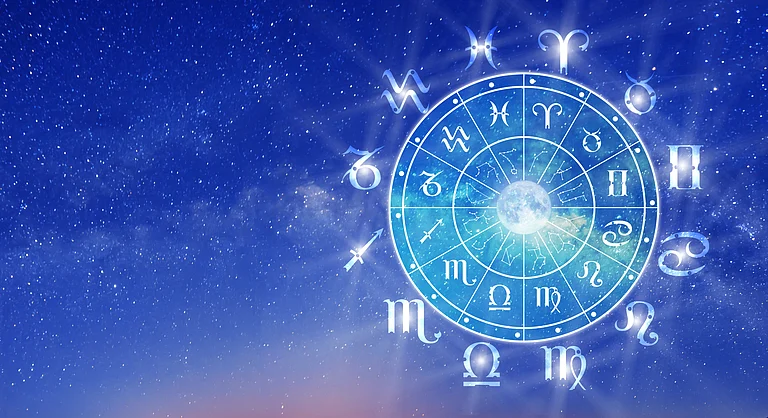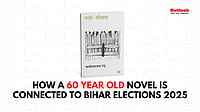Collecting exploded shells fired during military exercises at the Artillery Centre's practice grounds is a fine art here. "For the military, the shells are bhangar (scrap). For us they are gold," says Vishu Yadav, the village barber. With scrap copper fetching Rs 80 per kg, brass Rs 60, aluminium Rs 30, and iron Rs 5, it is estimated that on a low day, a shell-hunter can make up to Rs 200.
Able-bodied youth trek 5 to 10 km every morning, and wait in trenches and behind boulders for the shells to start thundering in. Between 200 and 500 shells rain over the valley every weekday between 8 am and 3 pm. Most make it back to be able to sell them for a living. A few don't. "It's like cricket," says Sampat Gaware, 40, a shepherd who was once part of the shell-collecting squad. "You have to grab your shell before the others do and before the next one comes along, sometimes within seconds. Those who dare, come upwinners. For the rest, well, tomorrow's another day."
This is the rural version of catches winning matches. Only, the catches they net are 10-25 kg heavy, up to 10 ft long shells, fired from 105 mm Indian and Light Field Guns, 122 mm howitzers, 130 mm guns, and 155 mm FH 77B Bofors.
"What is the primary produce of this village? Firing," says Daulatrao Bhaurao Deshmukh, 62, a former sarpanch. Deshmukh was 12 years old when the Artillery Centre was shifted to Nashik in 1942. His family got a one-shot compensation of Rs 59,000 for the 90 acres it held inthe original village which was taken over for the 25,600-acre firing range. He invested that money wisely. Those who didn't are busy picking shells.
For the record, authorities claim that the "main impact area" where the shells land is prohibited territory. The villagers are supposedly not allowed in there. And there are rangers monitoring civil-ian movements. But the villagers say that the artillery area is a free zone. Anyone who wants to enter, can. "They (the army) are there, we are here," says Ramadas Hari Damse, 30, who has acquired no other skill except the fine art of spotting the right shells, lugging them home and selling themto support his family of six. Admits Nashik Superintendent of Police Himanshu Roy: "Some of the villagers have become very adept at finding out which shells have already burst and which will soon."
The money from the sale of shells keeps the home fires burning and spirits high. "We spent all the money we earned from shells on booze," says Rambabai Gaware, who lost her husband Rama and three sons when unexploded shells burst in their faces.
"Death has become a routine experience for these villagers. They have become insensitive to it," says a Nashik doctor. Pimplegaon-Bahula village has lost so many of its men that it has earned the sobriquet, Vidhwanancha Gaon (village of widows).
Pandari Dagle, 42, a tribal from Langhewadi village, has seen his father, uncle and some eight others succumb to the power of the 'pack' (local lingo for unexploded shells). Seven years ago, a packburst in Dagle's face; five years ago one hit his leg. "The reason why I don't go to the valley today is not these injuries," he says. "It is my family. My wife and our five children have barred me. Otherwise, I would be there now. The money is good. It helps to buy booze."
Hunting for exploded shells to eke out a living is not the calling of the illiter-ate and unemployed alone. Rambabai's eldest son Ashok worked as a casual labour-er laying roads and shell collecting was a means of supplementing his income. And a former employee of the India Security Press gave up his government job and opted for this game of Russian roullette. "The facto-ries give us daily wages of Rs 15-20. The shells fetch us several times more," says Gnaneshwar Gawli, 28, whose family got five acres as compensation from the army for the 50 it originally held.
That the death toll is heavy is obvious. But while the Centre for Protection of Democratic Rights ( CPDR), which sent a fact finding team to the area recently, puts the annual deaths at a 100, no one else is willing to confirm that figure. Not even Pandari Dagle. "Eight to 10 is more like it," he says.
The police records reveal nothing. Nashik Collector V.K. Kanade is plainly dismissive of the CPDR figures. "If there were so many dying or so many getting injured, there would be demands for compensation, there would be an outcry from victims and people's representatives."
The villagers themselves are reluctant to reveal more. Most refuse to reveal even their names for fear of being taken to task by local goons. Except the very seriously injured like Bharat Gaware, they don't even bother to seek medical aid. Says Daulat Bhaurao Pedhekar, an adivasi lad who still has the marks of shrapnels that pierced his body on three different occasions: "I did not have them removed because it would have exposed me to the authorities."
Senior officers of the Artillery Centreadmit to casualties: "There is live firing. So there is bound to be some kind of impact. But not of the kind they are talking about." Even so, shouldn't the Centre do something? "Fencing and patrolling such a huge area is neither practical nor feasible. It is too cost-intensive," they say. "Those who want to find their way in will find it."
Last year the Artillery Centre handed over the responsibility of collecting the shells to an authorised contractor for a three-year period. The move deflected criticism, but only just. Activists say the contractor, Shivaji Chumble, instead of employing his own trained personnel, is using the servicesof the same villagers. Moreover, he was supposed to issue identity cards to 150 people who would be the only ones allowed into the range. But, says one newspaper reporter, "The contractor couldn't show us even one picker with an I-card."
So what is the solution to this ongoing tryst with death? The CPDR says the Deolali range should be denotified to save the villages. But ironically, for all the damage the shells have wrought on their lives, villagers are proud of the Artillery Centre. Says Daulatrao Deshmukh: "This is our state, this is our nation. We will have to suffer for its defence. Even if it means death."






















